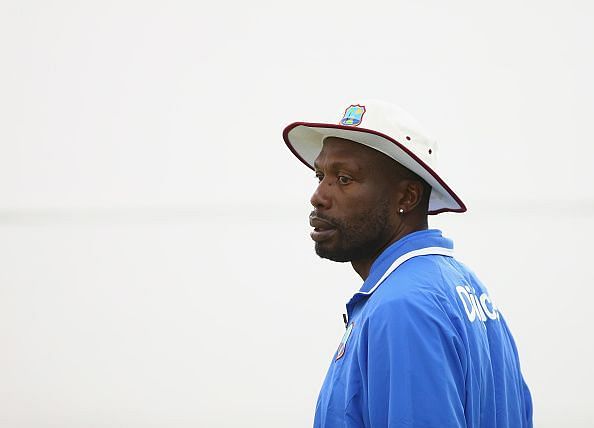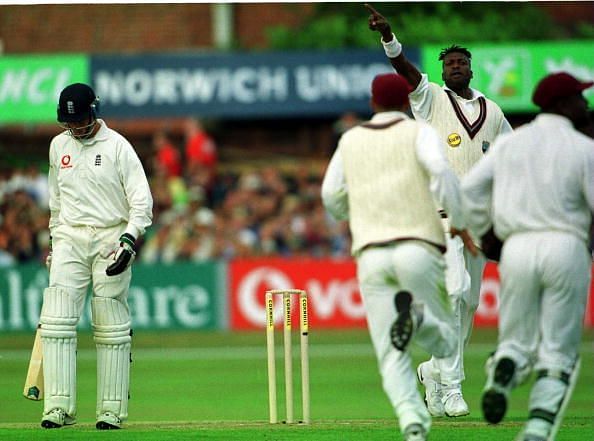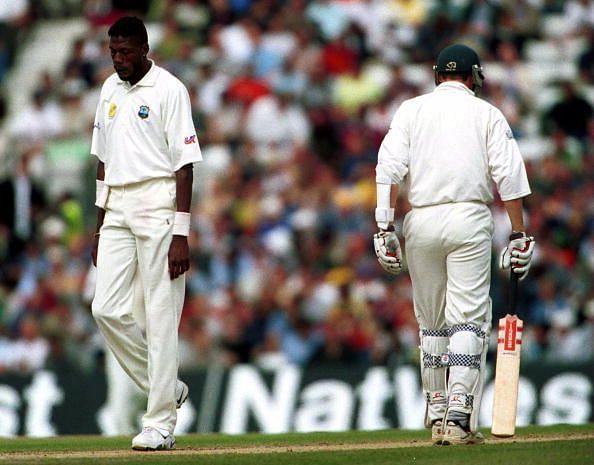
Sir Curtly Ambrose: The man who could cast a spell with his devastating spells

On a gloomy evening in my home city, I languidly sat in front of my TV screen watching Jofra Archer charge in with all his might trying to get Matthew Wade out. It was a fearsome spell of fast bowling that caught me in rapt attention and made me sit straight up, waiting to see what he would do next.
Steaming in with a visible fierceness about him, Archer looked to bang the ball in short and tell Wade that he wasn’t going anywhere. Not two Tests before did he do that to an in-form Steve Smith, and even then I had the same thought reverberating in my mind. The revival of fast bowling was well and truly steamrolling into modern day cricket.
West Indian quicks have been a major part of the art of fast bowling throughout. Over the years there have been pioneers of this art who managed to take it to such high levels that the term ‘revival’ is needed now that it is being brought back by the young guns of today.
It has been quite some time since we have had an army of bowlers looking to run in and bowl as quickly as possible with every single delivery. The last time that happened was when the quartet of Courtney Walsh, Waqar Younis, Wasim Akram and Curtly Ambrose were lighting up the international stage with their aggressive bowling.

As Sir Curtly Ambrose turns 56 today, it's worth looking back at what made this great of the game different from the other fast bowlers of his time.
Like every cricketer to come from the Caribbean, Ambrose was a chilled out guy most of the time. Once on the field, however, this man transformed into a hostile bowler out on the hunt.
Ambrose's run-up was full of feral aggression, and one glance into his eyes was enough to send shivers down a batsman’s spine. Oh and this was on a normal cricket morning. The audacity and the ferociousness went a notch higher when he was triggered (cue the wrist-band incident against Australia; ask Ian Healy at your own risk).
Millennials had a few chances of seeing him live on TV. However, all the knowledge about this bowling great came to me from what my father told me of the matches when his eyes would stay glued to the TV just because this man was running in and looking to scalp the batsmen with pace.
Being tall, Ambrose was blessed with abundant bounce. Even on the most unresponsive of wickets for fast bowlers, he managed to extract decent bounce because of his tall frame and the immaculate configuration of the torso just before releasing the ball.
Ambrose played at a time when batsmen-friendly rules had just begun to enter the game. A helmet on the head, a heavy bat in the hand and docile bouncer rules handicapped Ambrose and other bowlers of his time. That, however, did not make Ambrose any less devastating.
His unique ability to get the ball chest high from a good length troubled all batsmen and restricted their run scoring chances. Moreover, the pace he generated (which increased if a batsman got under his skin) coupled with his ability to keep bowling nagging lines made Ambrose one of the most lethal bowlers of all time.
In 2013-14, when Mitchell Johnson ran rampant on a hapless England side, I was smiling ear to ear seeing a fast bowler at the top of his game. My father went on to compare Johnson’s display to that of Ambrose, and walked off casually saying Ambrose did this all through his career.
There weren’t many who could hit Ambrose (an economy rate of 2.3 in Tests and 3.46 in ODIs is a testament to that), and when they did, Ambrose wouldn’t smirk or clap back. He would just walk halfway down the pitch and stare a hole right through the batsman.

“I couldn’t afford to think of whether the batsman would be hurt or if he would struggle. Fast bowling is really, really hard work. I can’t give up all my hard work for what the batsman is thinking,” the man once said.
Ambrose came into the West Indian set-up when there was a void left by Joel Garner. An ageing Malcolm Marshall was past his prime, and Courtney Walsh had started off as a fresh fast bowler.
What followed for years to come between Walsh and Ambrose was the stuff of dreams. Two complementing bowlers, who always tried to go one better than the other, became a real nightmare for batsmen all over the world.
There was no respite from either end as the two uniquely talented bowlers ran in hungry and angry. They ended up as the second highest wicket-taking pair in Test history, with 412 wickets in 52 matches.
It is hard to believe that at 22, Ambrose wasn’t certain about taking up cricket as a career. If he hadn't, the sport would have lost one of its greatest, most feared and most enigmatic bowlers of all time.
As Ambrose enters another year of his great life, the legend of ‘The Tall Dread’ continues to inspired fans all over the world.
Also see – World Test Championship Schedule